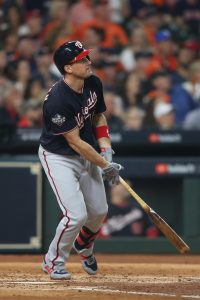Kris Bryant’s long-running service-time grievance against the Cubs finally came to an end last week. Bryant lost the hearing, meaning he’ll remain under team control for two more years instead of one. As you’d expect, the players’ association isn’t enamored of the results. MLBPA executive director Tony Clark issued a statement on the matter Tuesday:
“The Players Association disagrees with the decision issued today in the Kris Bryant service-time grievance. While we respect the finality of that decision, we will continue to pursue any and all measures that incentivize competition, discourage service-time manipulation and ensure clubs field their best players. We applaud Kris’ courage and determination in challenging the Cubs’ actions and seeing the grievance through to the end.”
Although Bryant understandably fought the Cubs over team control after they delayed his rookie promotion, he said last week he harbors no ill will against the club. While there doesn’t seem to be bad blood between the two sides, that doesn’t mean Bryant will be a Cub for much longer. The Cubs have had a modest offseason after last year’s dud of a finish, and if they’re as focused as getting under the luxury tax as, say, the similarly deep-pocketed Red Sox (who traded Mookie Betts and David Price on Tuesday), Bryant might not stick around for much longer. Bryant has been the subject of trade speculation for months, after all, and the fact that the $18.6MM man is controllable for two years instead of one should only help his value on the market.
A 28-year-old former NL MVP, Bryant has a pair of suitors in the Nationals and Phillies, who have shown “at least exploratory interest” in him, per Bob Nightengale of USA Today. This isn’t the first time either team has been connected to the 28-year-old Bryant this offseason, though, and it’s unclear whether they’re more inclined to trade for him now that the third base market has all but emptied out in free agency. The Nationals re-signed Asdrubal Cabrera, who figures to hold the position down until prospect Carter Kieboom’s set to take the reins, while the Phillies have the versatile Scott Kingery as their projected starter and Alec Bohm waiting in the wings.
The Braves, yet another NL East team, are in questionable shape at the hot corner, where they look prepared to roll with Johan Camargo and Austin Riley in the wake of Josh Donaldson’s exit in free agency. Nevertheless, the Braves have not been discussing Bryant with the Cubs, according to Jon Heyman of MLB Network, so it continues to look unlikely that he’ll end up in Atlanta.

